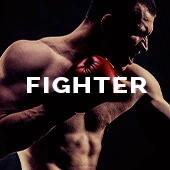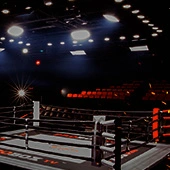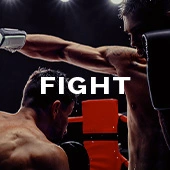by David P. Greisman, live from ringside
DUSSELDORF — For the first time in quite a long time, there is a new heavyweight champion. The end of Wladimir Klitschko’s reign came in a manner few expected, with Tyson Fury outboxing him and winning a clear unanimous decision.
The common logic was the same line of thinking for pretty much everyone who had sought to unseat Klitschko during his extended reign. If Fury were to score the upset, logic dictated that he would need to do so as a result of power, with heavy hands landing on a chin that had shattered more than a decade ago, had held up surprisingly well since then but had still seemed as if it merely needed the right person to crack it once again.
Fury never cracked Klitschko’s chin, though he did land on the chin and head with 68 of his 86 landed punches, according to CompuBox. One of those shots, a left hook toward the end of the ninth round, looked as if it momentarily wobbled Klitschko, who handled it well and never was in trouble.
He was already in trouble from what Fury had been doing for much of the eight preceding rounds. And he didn’t appear to know how to handle it.
Fury wasn’t throwing too often, but he was throwing more than Klitschko and landing more as well. Klitschko was throwing far too little and landing very rarely.
Fury had come running out of his corner at the opening bell. That wasn’t an indication of coming aggression, be it reckless or strategic. Instead, it was Klitschko coming forward and Fury moving away, yet it was Fury who was exploring with jabs and left hooks. Soon he was showboating by putting both hands behind his back against one of the biggest punchers in the sport, then sending out a left hook. Klitschko was blocking or dodging most of them. Fury was doing the same, however.
Klitschko is listed as 6-foot-6 and Fury as 6-foot-9. They seemed much closer in physical stature than that, and Fury’s first round sent a message that he was seeking to fight on Klitschko’s level as well.
It’s one thing to show that you can hang with the heavyweight champion through one round. Fury kept doing that for round after round.
Klitschko continued to work behind the jab in the early rounds, but the jab wasn’t working. He rarely let out a left hook or right cross. Fury was much more willing to attempt those shots. He wasn’t much more successful. After two rounds, Klitschko had landed just one power punch while Fury had landed four.
Beating Klitschko wasn’t just about power. It was the entire package Fury brought that was giving Klitschko trouble. It was the punches he was throwing and when they came. It was the feinting and the occasional movement and the changes in distance. Klitschko was barely even landing his vaunted jab, and without the jab he wasn’t able to set up the left hook lead — which tends to be disguised as a jab, only to come with crushing power — or follow-up right crosses. He also wasn’t investing in work to the body; he’d only land six to Fury’s midsection on the entire night.
Fury continued to cruise with confidence. He switched to southpaw in the third round. He put his hands down again in the fourth, shaking his head after a couple of minutes in which Klitschko had missed with the few right hands he threw. Klitschko was at last able to land one of them in the fifth, getting the punch in over Fury’s jab. Soon Klitschko’s left cheek was cut, what the referee ruled the result of an accidental clash of heads. With about 20 seconds left, Fury threw a jab and then followed with a good right hand that looped around Klitschko’s guard.
By the end of the sixth, Fury had slightly outlanded Klitschko, with 31 of 162 punches hitting their target compared to Klitschko’s 23 of 96. Fury wasn’t as accurate, and the statistical advantage was slight, but he was ahead on the cards and halfway toward the win.
Klitschko continued to meet Fury at the center of the ring before the bell to start each round. He was willing to fight, but either not willing or not able to do what it took to win. He finally got to Fury with a solid right hand in the early moments of the ninth. That was the same round in which Fury later landed the very good left hook which wobbled Klitschko — launched after Wladimir had spun around, only to turn back into the shot.
Klitschko must’ve known he was behind, as he began to show the proper urgency with the start of Round 11. It still wasn’t turning the ride. He soon had a cut over his right eye as well. Toward the end of the round, Fury landed a punch behind Klitschko’s head, not his first on the night, and referee Tony Weeks took a point away.
That point wouldn’t make a difference. Klitschko still needed a knockout to win. He didn’t get one in the 12th. The fight went to the scorecards, with one judge seeing it 116-111, nine rounds to three and with the point deducted from Fury, while the other two judges had it closer at 115-112, or eight rounds to four.
Fury had outlanded Klitschko, going 86 of 371 in total, or 23 percent, an average of 7 punches landed per round for every 31 thrown. He was 48 of 202 with power shots, a 24 percent connect rate, landing an average of 4 of 17 per round. He even outjabbed Klitschko by a small margin, going 38 of 169, a 22 percent connect rate, an average of 3 of 14 per round.
Klitschko, in contrast, landed only 52 punches on the entire night and threw only 231, a 23 percent connect rate with a paltry average of 4 of 19 per round. He was only 18 of 69 with power punches, 26 percent, a percentage that doesn’t matter when you realize that means Klitschko landed less than two per round and threw less than six per round. He was 34 of 162 with jabs, a 21 percent connect rate, about 3 of 14 per round.
It was a weak way to end his time as a world titleholder. Klitschko had been consigned to the scrap heap after knockout losses to Corrie Sanders in 2003 and Lamon Brewster in 2004, thought never to return to the title picture again. He visited the canvas again in a win over DaVarryl Williamson later in 2004 and looked shaky in rising from three knockdowns to top Samuel Peter in 2005.
But his next fight, a win over Chris Byrd in 2006, got Klitschko another belt. He defended that belt successfully 18 times in the years since, added two other major world titles along the way, and became the lineal champion with his 2009 win over Ruslan Chagaev.
He was the man. Now he’s not. Now he’s fallen to 64-4 with 53 KOs.
He’ll get another chance. Although Fury was mandatory contender for one of Klitschko’s world titles, the two parties went into negotiations and reached a deal instead of having the fight to a purse bid. If there had been a purse bid, there wouldn’t have been a contractual rematch clause. The language the two sides agreed upon means that we’ll get Klitschko-Fury 2, although in this case it’ll need to be listed as Fury-Klitschko 2.
Klitschko might be 40 by the time that happens; his birthday is in March. Fury is 27 years old and is now 25-0 with 18 KOs. None of those previous 24 wins came against anyone like Klitschko. But he traveled from the United Kingdom to a country that loves Klitschko, stepped in with the longtime heavyweight champion, and made it look as if he belonged all along.
Pick up a copy of David’s book, “Fighting Words: The Heart and Heartbreak of Boxing,” at http://bit.ly/fightingwordsamazon or internationally at http://bit.ly/fightingwordsworldwide . Send questions/comments via email at fightingwords1@gmail.com


